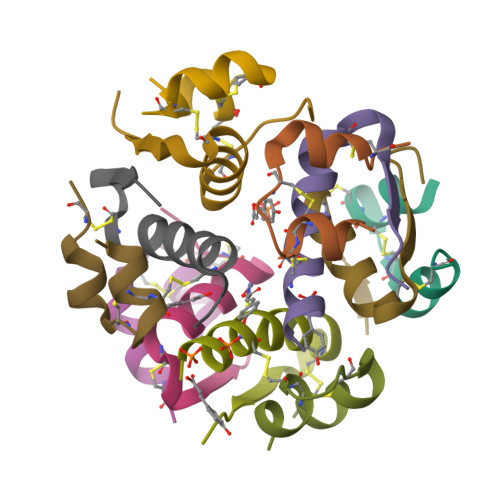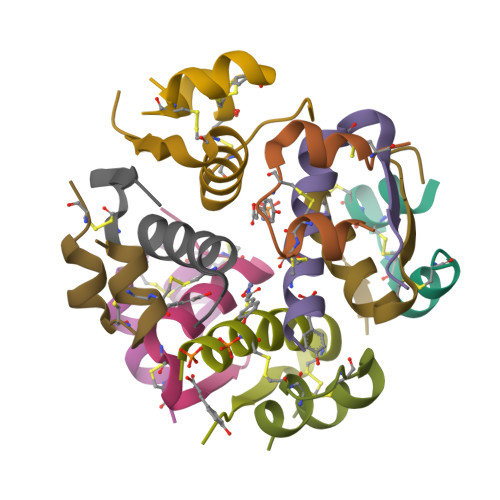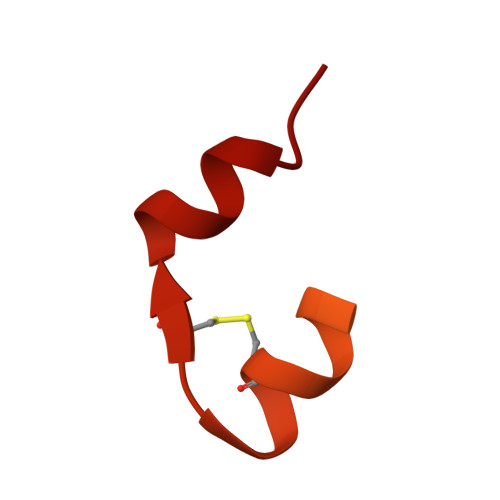Insulin polymorphism induced by two polyphenols: new crystal forms and advances in macromolecular powder diffraction.
Triandafillidis, D.P., Parthenios, N., Spiliopoulou, M., Valmas, A., Kosinas, C., Gozzo, F., Reinle-Schmitt, M., Beckers, D., Degen, T., Pop, M., Fitch, A.N., Wollenhaupt, J., Weiss, M.S., Karavassili, F., Margiolaki, I.(2020) Acta Crystallogr D Struct Biol 76: 1065-1079
- PubMed: 33135678
- DOI: https://doi.org/10.1107/S205979832001195X
- Primary Citation of Related Structures:
6TC2 - PubMed Abstract:
This study focuses on the polymorphism of human insulin (HI) upon the binding of the phenolic derivatives p-coumaric acid or trans-resveratrol over a wide pH range. The determination of the structural behaviour of HI via X-ray powder diffraction (XRPD) and single-crystal X-ray diffraction (SCXRD) is reported. Four distinct polymorphs were identified, two of which have not been reported previously. The intermediate phase transitions are discussed. One of the novel monoclinic polymorphs displays the highest molecular packing among insulin polymorphs of the same space group to date; its structure was elucidated by SCXRD. XRPD data collection was performed using a variety of instrumental setups and a systematic comparison of the acquired data is presented. A laboratory diffractometer was used for screening prior to high-resolution XRPD data collection on the ID22 beamline at the European Synchrotron Radiation Facility. Additional measurements for the most representative samples were performed on the X04SA beamline at the Swiss Light Source (SLS) using the MYTHEN II detector, which allowed the detection of minor previously untraceable impurities and dramatically improved the d-spacing resolution even for poorly diffracting samples.
Organizational Affiliation:
Section of Genetics, Cell Biology and Development, Department of Biology, University of Patras, GR-26500 Patras, Greece.




















